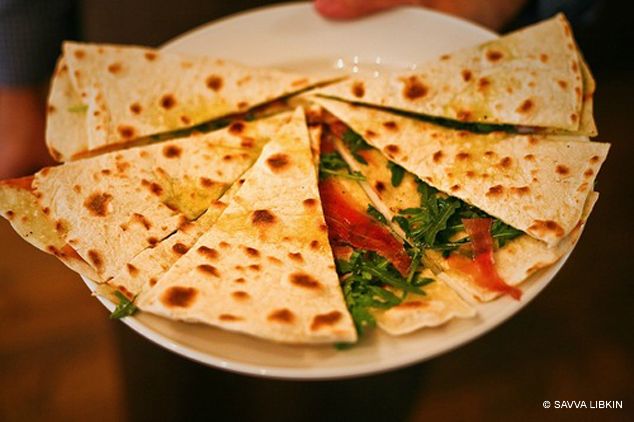
Piadina from Romagna
Are you looking for a national idea? It is a bakery just around the corner.
Every day, people all over the world eat bread, well, except for the Eskimos, who just have nothing to make it from.
The bread our ancestors ate in the Stone Age was something like a baked porridge. In Ancient Rome, a slave capable of making bread cost 10 times as much as a gladiator. Among free craftsmen, only bakers had an access to the higher public positions. You can still find a well-preserved 13-metre tomb of Marcus Vergilius Eurysaces the baker — a rich freedmen — that was built more than 2000 years ago in Rome.
If during a trip you want to learn about real cuisine of a country, you should visit not only local markets, but also a bakery or any other place where they make and sell bread.
A nondescript bread, cut and wrapped in several layers of polyethylene, is a bad sign: food culture is likely to be a problematic issue in the country. There are bakery plants and technologies instead, used to make something to be stored for several weeks without getting stale and mouldy.
It is a different story, when there are several dozens of various breads, and bread is baked in the morning and by noon a bakery closes because everything is sold. You are sure to discover and taste many interesting and delicious foods in this country apart from bread.
I have recently attended baking classes in Provence and learnt how to make artisanal bread. I met Christian, who is simply in love with what he does, in Biot village. He has been teaching French children, how to make bread (not just, how to sell and make money, but really make it) for 20 years already. Christian kneads water-based dough at room temperature and decides its readiness solely by intuition. He kneads dough for each loaf separately and bakes bread in a big wood-fired oven. French are known to be fond of bread like no one else in the world. To compare, British and German cuisine is based on meat and potato instead.
Italian bread is also great: Italy is the fourth country in the world in terms of bread consumption per capita. Italian bread recipes are endless. Italian bread is tasty everywhere in the country: grissini in Piemonte, vastedda in Sicily, pita in Calabria, focaccia in Genoa and, of course, panini with couple of dozens of toppings all over Italy. Many types of Italian bread dough are kneaded with yeasts, but there are exceptions.
Piadina from Romagna is one of them.
First mentioning of Piadina recipe dates back to 1371. Little has been changed since then: they still use the same flour, knead water-based dough and add salt. It is also possible to use milk instead of water and add lard instead of more common olive oil. The thing is that historically pig farming is well-developed in Romagna, even the poor could afford hog products, while olive oil was expensive and only rich Italians bought it.
Wheat, envisaged by initial 'people's' recipe, was substituted with corn flour, bran and millet, because they were cheaper. Yeast dough was used only for muffins and pastry, such as сiambelle. Piadina was the main bread both for the rich and for the poor.
Piadina can be considered one of Romagna symbols: it is sold everywhere here, and there are much more piadina stalls than pizza ones. This flatbread is made in the presence of customers: they roll dough into a disc and then cook on both sides on a flat pan or griddle. When piadina is ready they slice it in four pieces (sometimes more), cut through each piece and add fillings: ham, soft cheese, stewed greens and dozens of other variations. Traditional piadina was cooked on a stone.
Folded piadina is called cassone in the name of herb crescione (Italian for garden cress) that was simmered with garlic and put onto a rolled flatbread dough; flatbread then was sealed and cooked as common piadina. Beside this traditional recipe, Romagna offers cassone with tomatoes and mozzarella, salami, dry-cured ham and other products, the Adriatic coast of Italy is proud of.
And now, let's take our minds off piadina and Italy, and imagine that all over Odessa they start selling sandwiches, consisting of Borodinsky bread (sourdough rye bread with malt, carum and coriander) and bryndza made of sheep milk, Mikado tomatoes, belly bacon, salo [Ukrainian lard] or Danube herring. This is how we can, on the one hand, introduce national cuisine to tourists instead of relying on less efficient posters and signs calling for buying Ukrainian products, and on the other — have a healthy alternative to omnipresent and not always fresh shawarma.
Written for Forbes No.7 (17), July 2012.


